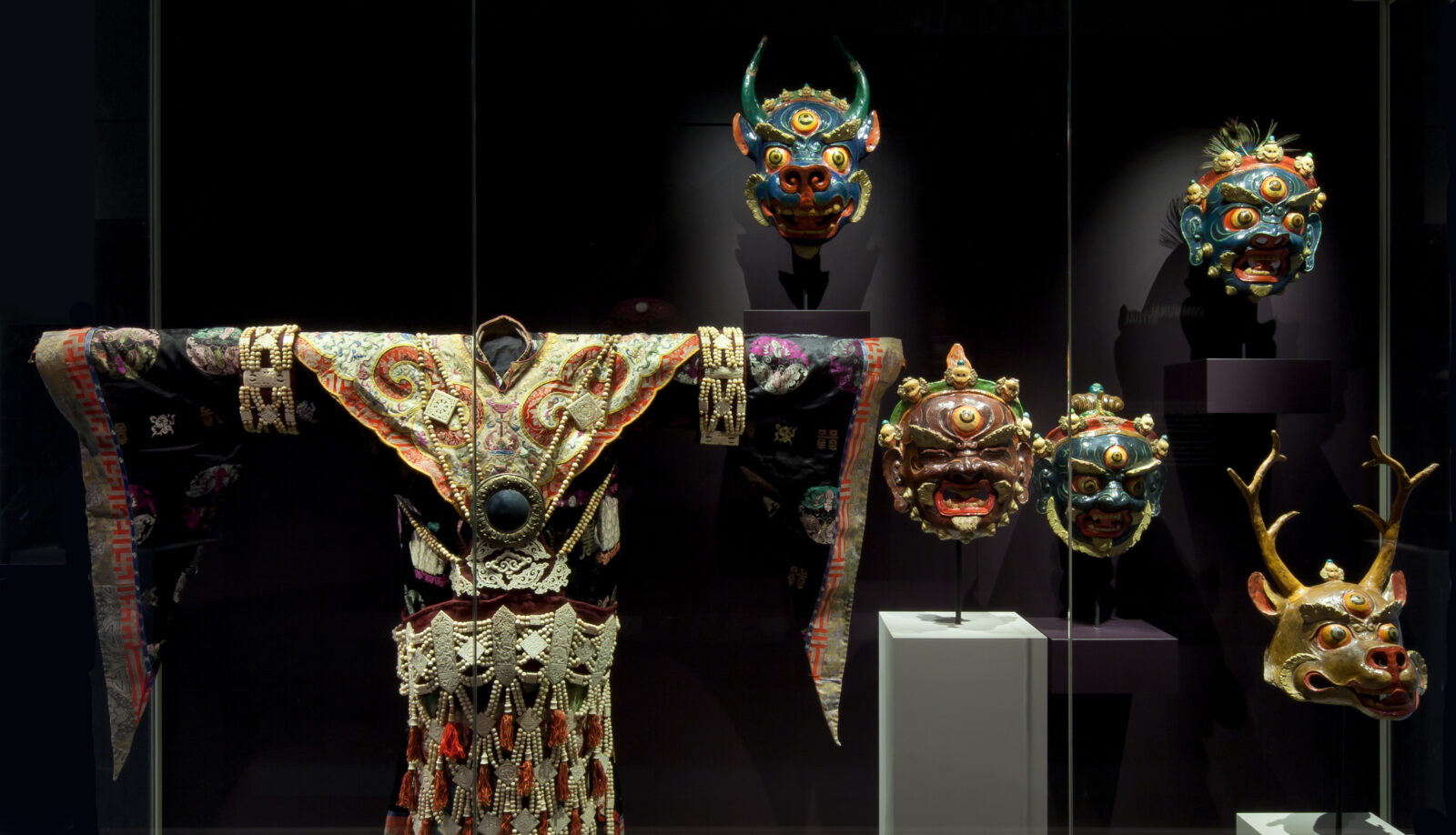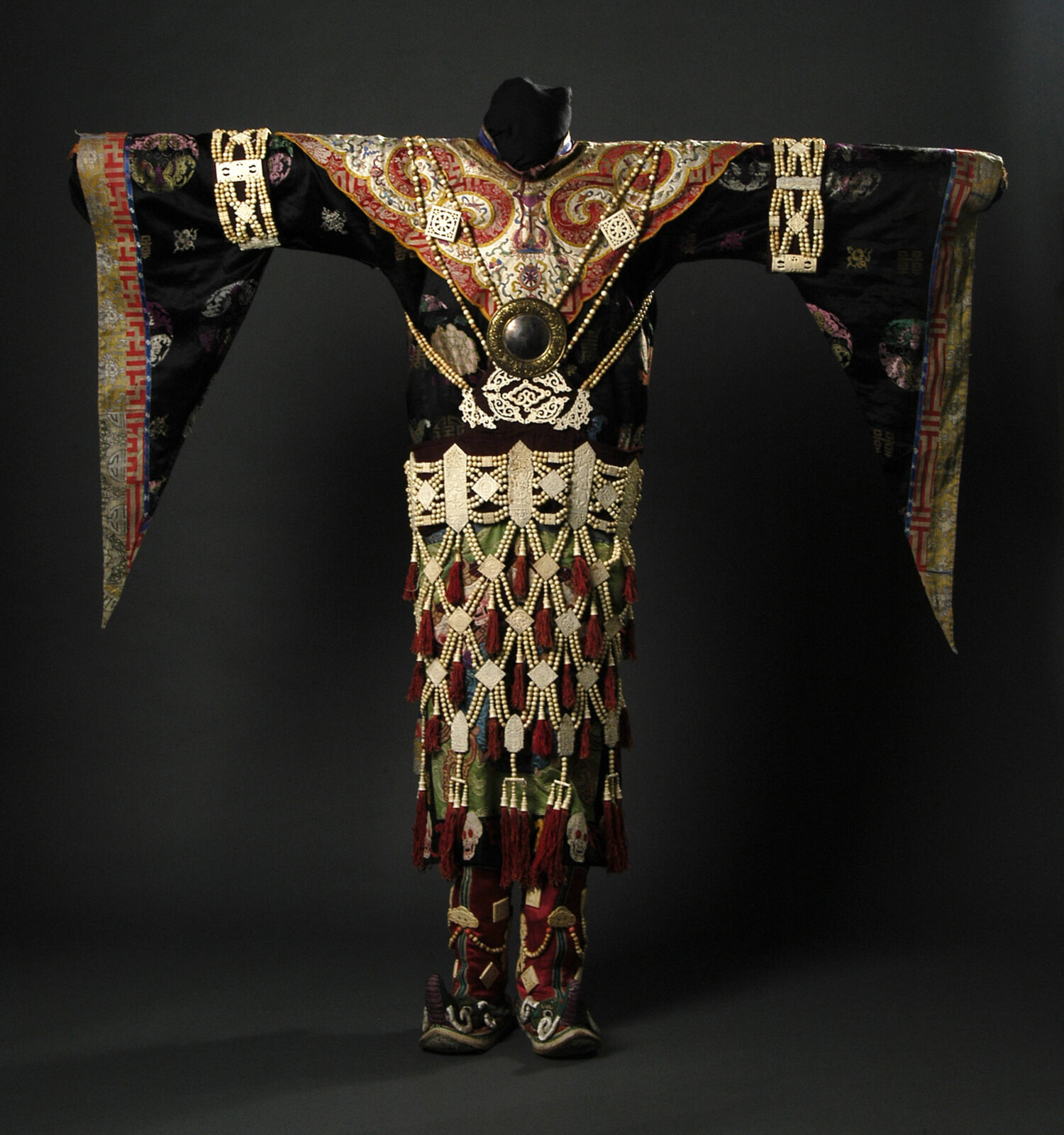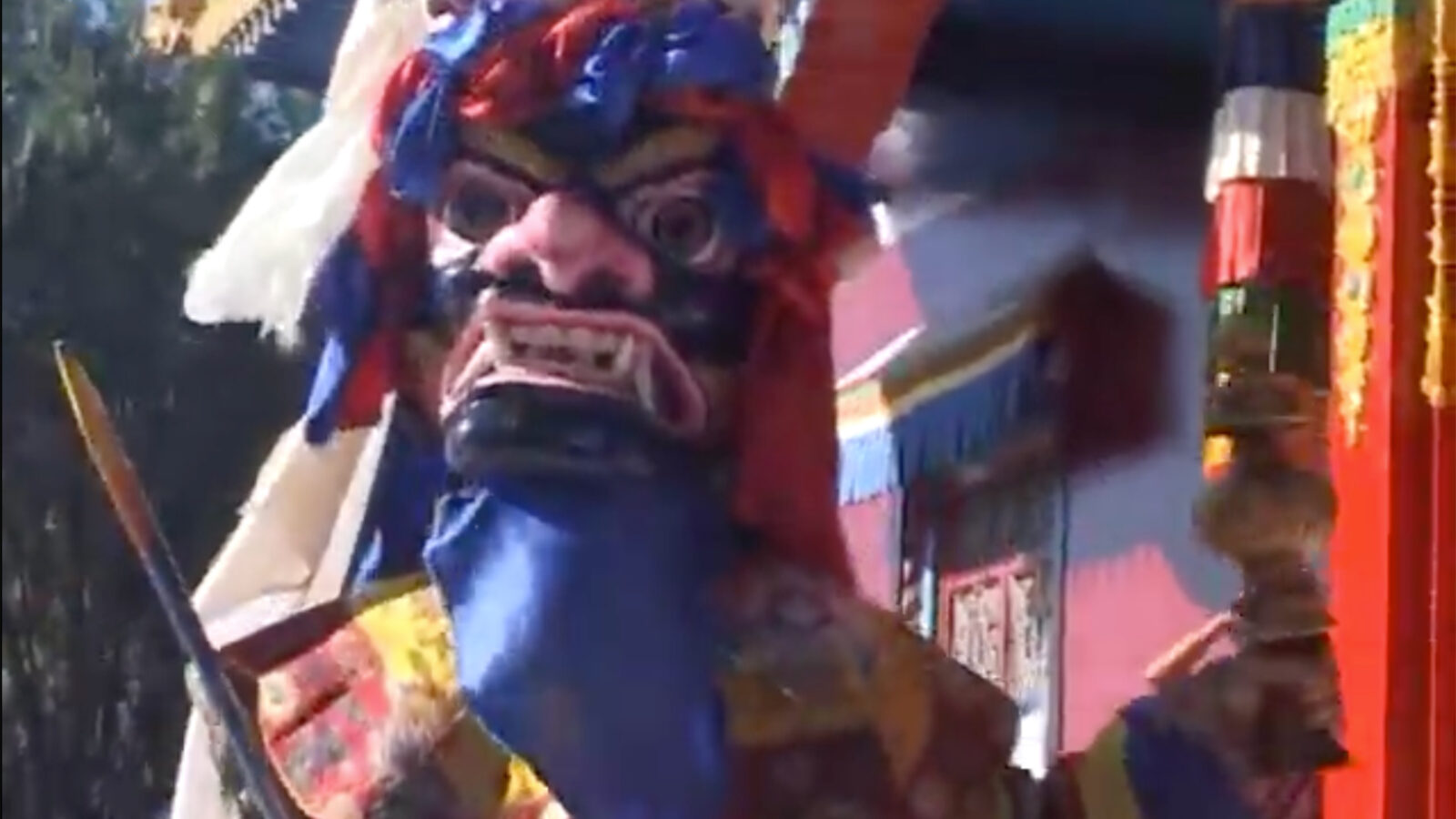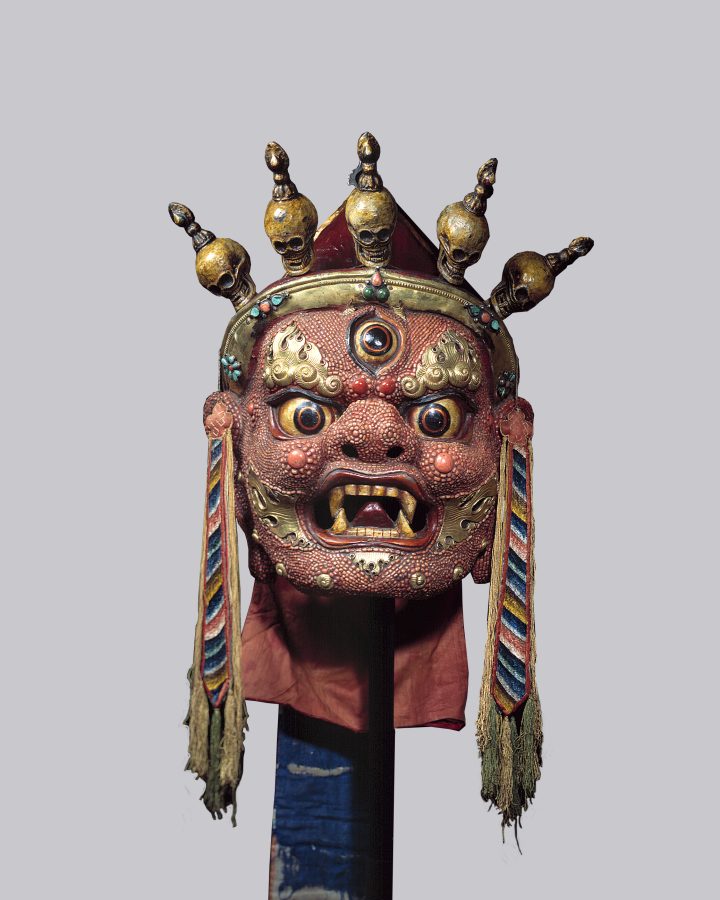


Imagine the clashing of wrathful deities and scornful demons alongside Buddhist saints confronting macabre skeletons—the forces of good struggling to suppress the powers of chaos and death. Those are just some of the many dramatic narratives performed in ceremonial cham dances.
Cham dances emerged from the Buddhist tradition of Tibet and are performed on particular holidays and to mark important auspicious events. The cham dance is executed as a practical means to purify and protect the respective monastic village community in which it is performed and to attune its energies with those of the land. They are not meant as entertainment, though they are amazing spectacles to observe.

Cham Dance Costume Attire; Mongolia; early 20th century; silk, bone, metal; Diane and Robrecht Lambin Collection, Antwerp, L161.1.1.
This particular example of a cham dance costume, featured in the exhibition Becoming Another: The Power of Masks, is Mongolian. It consists of a dark brocaded gown with wide sleeves, an apron embroidered with skulls, an embroidered cape-like triangular collar, and ornate boots. The whole set is embellished with ornaments made of strings of bone beads and square and rectangular sculpted plaques. The boots end in the shape of a makara, or sea monster, and are decorated with bone lozenges, or vajras, and beads.

In this video you will notice the large quantity of dancers and the wide variety of characters they manifest. Cham dances differ in structure and narrative between the different Buddhist sects that perform them, though they are always exacting in their execution, as they regard the ritual as capable of warding off evil spirits.
Monks and nuns perform the dance in the central courtyard of a Buddhist community’s monastery. Music of copper horns, bone trumpets, tambourines, cymbals, and choirs open the cham dance, and is soon joined by a procession of masked actors representing past religious teachers, threatening animals, Buddhist saints, and many other characters. The whirling seen in the video is allegorical for the struggle of good over evil. Notably, the dancers have to be strong and well-trained, as the masks are heavy and the ritual dances must be performed precisely.

Rubin Museum
150 W. 17th St., NYC
Get the latest news and stories from the Rubin, plus occasional information on how to support our work.